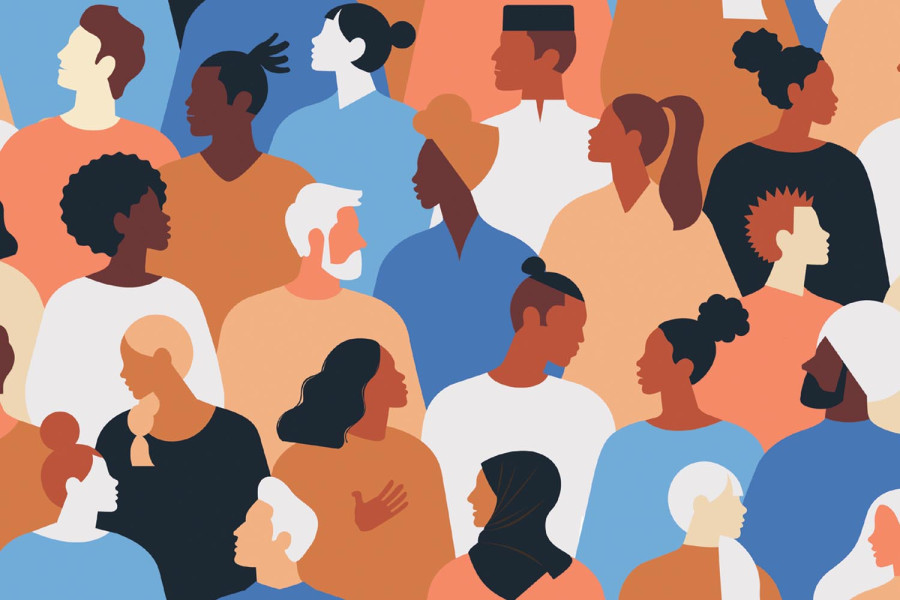Culture & Lifestyle
Workplace wellness through a cultural lens
As multicultural workplaces grow, mental health is shaped not just by psychology but by culture. Ignoring these differences can leave employees unheard and unsupported.
Dipesh Tandukar
The discussion about cultural differences and how people from various backgrounds perceive mental health has taken an interesting turn as society aims to be more inclusive. With increased cultural integration, there appears to be more confusion about how different regions understand concepts like stress, sadness, or even “mental illness” itself.
Let’s say someone is experiencing panic attacks, while in one culture, it might be seen as a problem that needs attention and therapy, whereas a different culture might perceive it as a spiritual imbalance that should be treated with rituals or prayers. Neither view is inherently wrong because both focus on how the individual can be helped. Still, the mismatch between cultural expectations and mental health care determines whether the individual will recover or suffer in silence. These similar situations occur in different workplaces and societies we observe today.
The impact that cross-cultural differences are making is often overlooked. Generally, we take the “one-size-fits-all” approach, which is heavily influenced by Western psychology, when treating mental illnesses. Yet, our workplaces are increasingly multicultural in Kathmandu, London, or New York. If we ignore how different cultures shape mental and emotional health, organisations and even countries risk misinterpreting their struggles and not coming up with proper solutions aimed at supporting both the residents and the migrants.
The risk of cultural integration can go both ways. On the one hand, migrants might find it difficult to adapt to new cultural norms at the workplace. They may believe they need to work extra hours and avoid complaining about difficulties because they are new, and complaining could be seen as being “uncommitted.” Meanwhile, managers and colleagues unaware of this might never realise that the person is close to breaking down, as they can openly discuss their stressors and take breaks occasionally, as is customary in their own culture.
Conversely, migrants who wish to see their own culture reflected in the new workplace may impose their expectations on management. They might want things to be done as they were in their hometown, which can create friction between older and newer employees and eventually lead to conflict. In both scenarios, conflict and stress are unavoidable. Therefore, the challenge lies in managing the new cultural differences while safeguarding the local culture. Since cultural integration is inevitable, the only question is how it will unfold.
Workplaces must address these issues more carefully. They need to consider whether their policies could harm individuals. They should also question if there are significant differences between the two new cultures. Such differences could cause problems if they are not properly addressed. Therefore, cross-cultural differences must be managed more tactfully to understand how the overall situation unfolds.
Every illness is influenced by the cultural significance it bears. This is true not only for hospitals but also for offices. Workplaces frequently adopt Western HR practices such as wellness workshops, mindfulness sessions, or open-door policies, assuming all staff will participate equally. However, for someone raised in a culture where vulnerability is stigmatised, these methods may seem irrelevant or even intimidating. Instead of feeling supported, employees might withdraw further.
Counterintuitively, collectivist cultures, where people place family and group above themselves, can both protect and harm workplace mental health. On one hand, strong team bonds can shield employees from isolation. On the other, the pressure to “not let the team down” can push workers into silent overwork. They might keep showing up to work even when they are sick and need rest because they don’t want to be a burden.
Workplace stigma also differs across cultures. In some societies, men avoid admitting stress because masculinity is tied to toughness. In others, women hesitate to seek help, fearing gossip or judgment about their competence. Women might feel the urge to “prove her worth” by working twice as hard as their male colleagues.
This is why companies need to rethink “mental health policies” not as universal checklists but as flexible, culturally sensitive systems. The western countries might be ready for open discussions and even promote apps that provide therapy while in some regions, the societies might be more reserved and need more religious coping strategies, religious integrations, family involvement, more awareness and group discussions at grassroot level.
Culture does not always need to be a barrier; it can also serve as a platform for progress. Communal tea breaks, shared rituals, and prayer times can help individuals unwind and connect. They can help people realise the need to understand someone else’s culture while preserving their own. However, the different solutions we come up with cannot be copied and pasted; we need to understand the context in which we apply them. One of the most important things is that we have to be open about differences. Because if we don’t feel included in the groups we work with, chances are we wouldn’t want to be there.
Cross-cultural differences remind us that mental health is never just about the brain; it is also about identity, culture, and context. Nowhere is this clearer than in the workplace, where people from diverse backgrounds must coexist under the same roof to achieve a common goal. If organisations want healthier workers and stronger teams, they must stop pretending culture is a side issue and start addressing whatever friction comes up before it is too late.




 12.12°C Kathmandu
12.12°C Kathmandu













%20(1).jpg&w=300&height=200)

